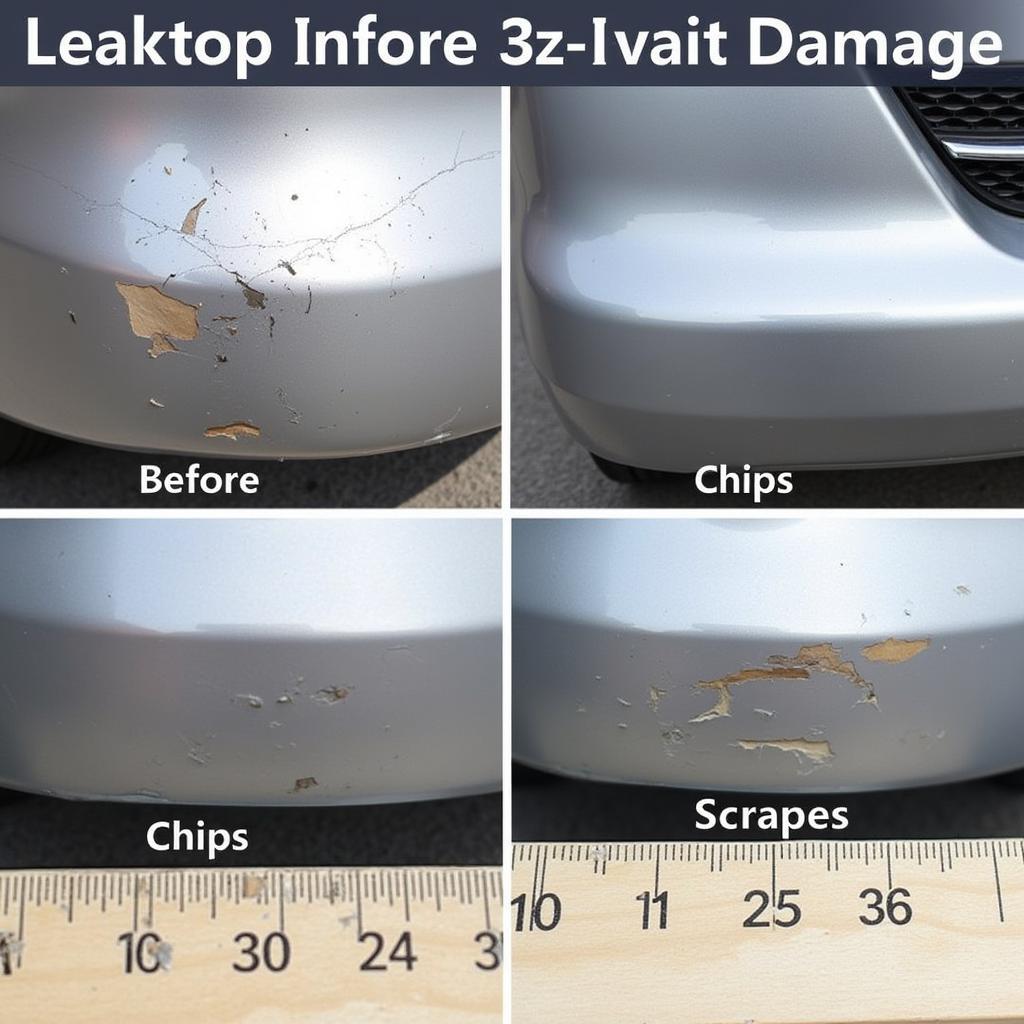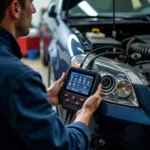Repairing paint damage on a car bumper can seem daunting, but with the right approach, it can be a manageable DIY project. Whether you’re dealing with minor scratches, chips, or more extensive scrapes, this guide provides comprehensive instructions and expert advice to help you restore your bumper’s appearance. From assessing the damage to selecting the right tools and techniques, we’ll cover everything you need to know to achieve professional-looking results.
Addressing paint damage promptly is crucial, not only for aesthetics but also to prevent rust and further deterioration. This comprehensive guide will empower you to tackle the task effectively and confidently. We’ll explore different repair methods, ranging from simple touch-ups to more involved procedures for deeper damage. So, let’s dive in and learn how to repair paint damage on your car bumper like a pro.
After cleaning the area, you can accurately assess the damage and determine the necessary repair steps. For minor scratches, a simple touch-up might suffice. However, deeper chips and scrapes may require sanding, priming, and painting. Understanding the extent of the damage is essential for selecting the appropriate repair method.
This section provides a step-by-step guide for repairing paint damage on a car bumper, covering various scenarios and levels of damage. You will learn about the necessary tools, materials, and techniques for each step of the process, ensuring a professional and long-lasting repair. This guide will also help you choose the most cost-effective solution for your specific needs. See more at paint repair car bumper.
Assessing the Damage: The First Step in Bumper Repair
Begin by thoroughly cleaning the damaged area with soap and water, then dry it completely. This removes dirt and debris, allowing for accurate damage assessment. Is it a minor scratch, a deep gouge, or just a small chip? The type of damage dictates the repair approach. For deeper scratches that reach the plastic, you’ll need a slightly different approach than for surface scratches.
Gathering Your Tools and Materials
Having the right tools and materials makes the repair process smoother and yields better results. You’ll need items such as sandpaper (various grits), primer, automotive paint (matched to your car’s color), clear coat, masking tape, and applicators. Consider investing in a high-quality automotive touch-up paint pen for precise application. Learn more about the magic car scratch repair paint pen.
 Assessing Car Bumper Paint Damage
Assessing Car Bumper Paint Damage
Step-by-Step Guide to Repairing Paint Damage
This section provides a comprehensive guide for different repair scenarios:
Repairing Minor Scratches
- Clean the area: Thoroughly clean the scratched area with soap and water.
- Apply rubbing compound: Use a rubbing compound to buff out minor scratches.
- Wax and polish: Apply wax and polish to restore shine.
Repairing Paint Chips
- Clean the area: Ensure the chipped area is clean and dry.
- Apply primer: If the chip has reached the metal, apply a thin layer of primer.
- Apply touch-up paint: Carefully apply touch-up paint, building up thin layers until the chip is filled.
- Apply clear coat: Once the paint is dry, apply a layer of clear coat for protection.
Repairing Deeper Scratches and Gouges
- Sand the area: Sand the damaged area with progressively finer grits of sandpaper until smooth.
- Apply body filler: If necessary, apply body filler to fill deep gouges.
- Prime the area: Apply primer to the sanded area.
- Apply paint: Apply several thin coats of automotive paint, allowing each coat to dry before applying the next.
- Apply clear coat: Finish with a layer of clear coat.
When to Seek Professional Help
While many minor paint repairs can be done at home, some situations warrant professional assistance. Extensive damage, deep cracks, or damage to underlying components are best left to experienced professionals. If you’re unsure about your DIY skills, or if the damage is severe, consider contacting a reputable car paint and bumper repair service. Find a car paint and bumper repair rogers. Don’t underestimate the expertise needed for more complex repairs like large paint chip repair on car. For certain services, like can car paint chip repair service, professional expertise may be essential.
Conclusion
Repairing paint damage on a car bumper is a manageable task that can save you money and maintain your car’s appearance. By following the steps outlined in this guide and using the right tools and techniques, you can achieve professional-looking results. Remember to assess the damage carefully and choose the appropriate repair method for the best outcome. How to repair paint damage on car bumper effectively requires patience and attention to detail.
FAQ
- Can I use any type of paint for touch-ups?
- How long does it take for touch-up paint to dry?
- What is the best way to match my car’s paint color?
- How can I prevent future paint damage on my bumper?
- When should I replace my bumper instead of repairing it?
- What type of sandpaper should I use for sanding the bumper?
- Can I repair paint damage in extreme weather conditions?
What are the common causes of paint damage on car bumpers? These include minor collisions, scrapes from parking, and rock chips. How can I protect my car bumper from future paint damage? Consider using a bumper protector or parking further away from other vehicles. You can also explore related articles on our website about maintaining car paint.
Need more help? Contact us via WhatsApp: +1(641)206-8880 or Email: [email protected]. We have a 24/7 customer support team.

